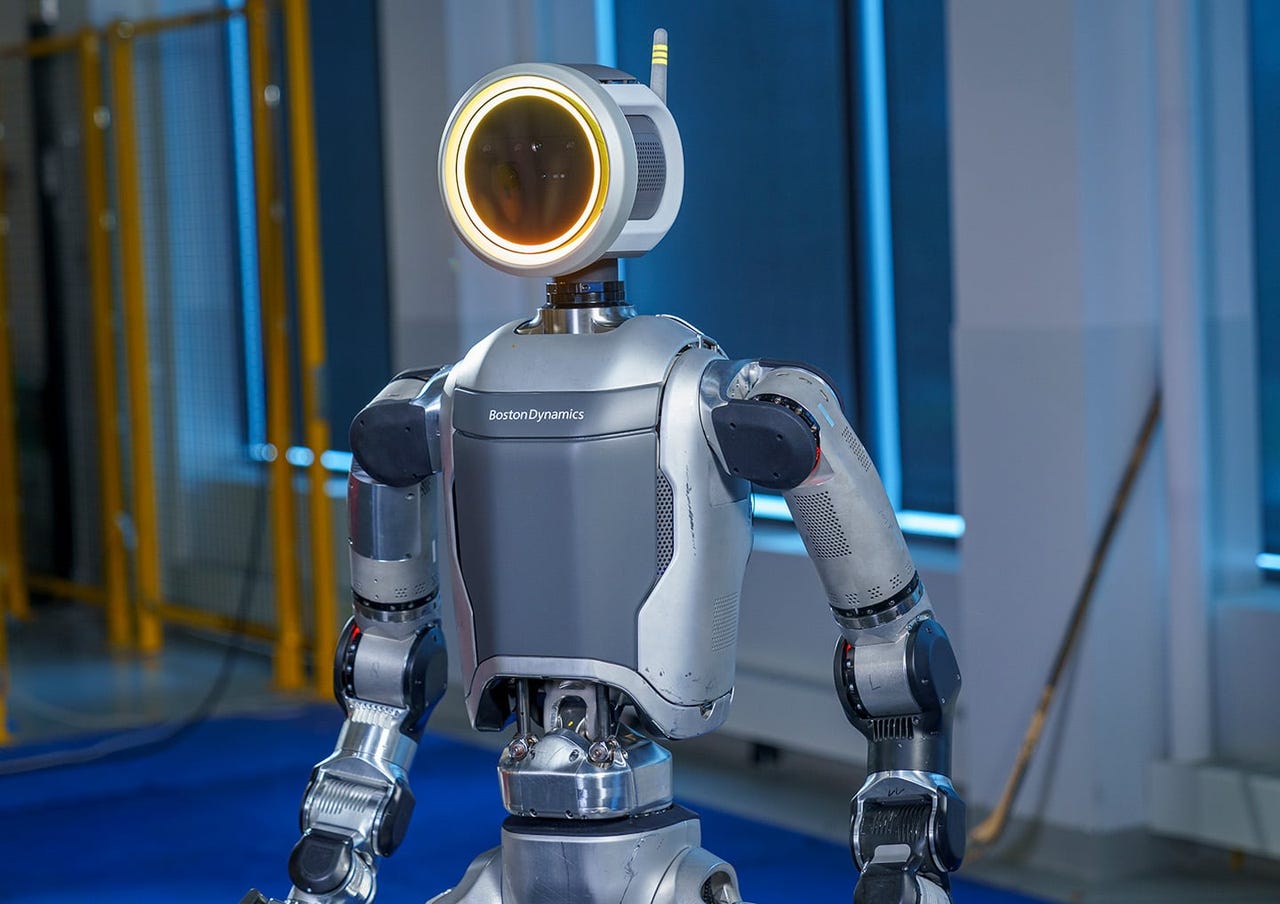
Just a day after announcing the retirement of Atlas the hydraulic humanoid robot, Boston Dynamics has revealed a new version of its bipedal robot – a fully electric version designed specifically for real-world applications.
In a video showcasing the new design, which is still named Atlas but looks very different from the previous generation, a robot lies on the ground. After spinning its legs around 270 degrees, the robot rises to its feet, pivots its head and body around 180 degrees, and walks away. It’s all a bit creepy.
Also: Instant evolution: If AI can design a robot in 26 seconds, what else can it do?
The new Atlas has no exposed wires or cables, a more human-like head and body design where the head is a large ring light, and an overall much sleeker feel. Movement is still a bit clunky, but significantly smoother and quieter than its predecessor.
Boston Dynamics said the new Atlas is not only stronger and more agile, but also has a wider range of motion than any previous generation. While the previous Atlas could lift and maneuver heavy objects, the retooled Atlas takes those capabilities and adds a number of grip variations for different environments.
While it may look human, the new Atlas design will be able to move in the most efficient way possible without the limitations that the human body brings, according to its creators. “Atlas will move in ways that exceed human capabilities,” Boston Dynamics wrote, adding that it was confident the robot would be able to take on the most boring, dangerous, and dirty tasks.
But, the company acknowledged, the actual physical capabilities of the robot are only a small part of making something successful for commercial use. In addition, companies need a robust IT structure, safety standards, buy-in from employees, and operational processes. “We believe that humanoids will be most effective,” the company wrote in a press release, “if they are deployed with in-depth models of a facility and lots and lots of data about how it operates.”
